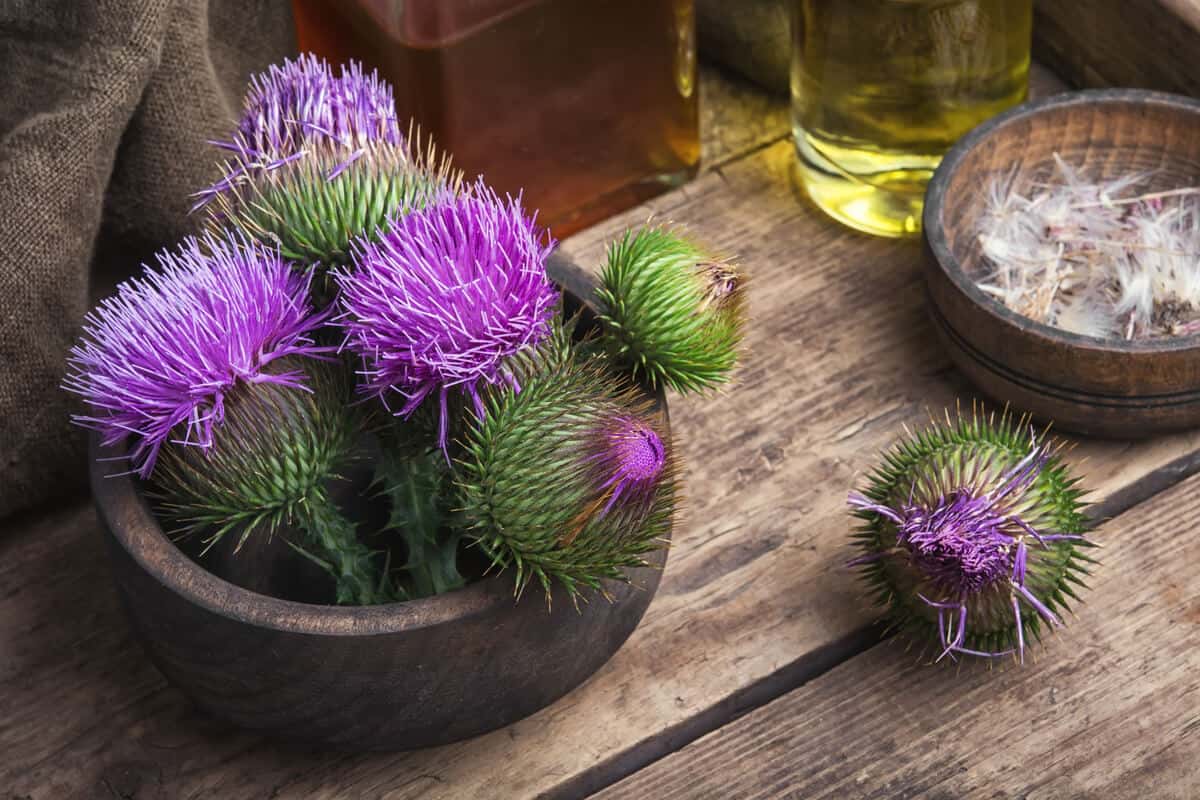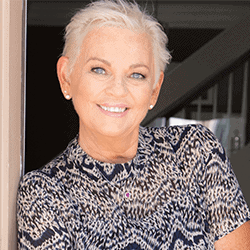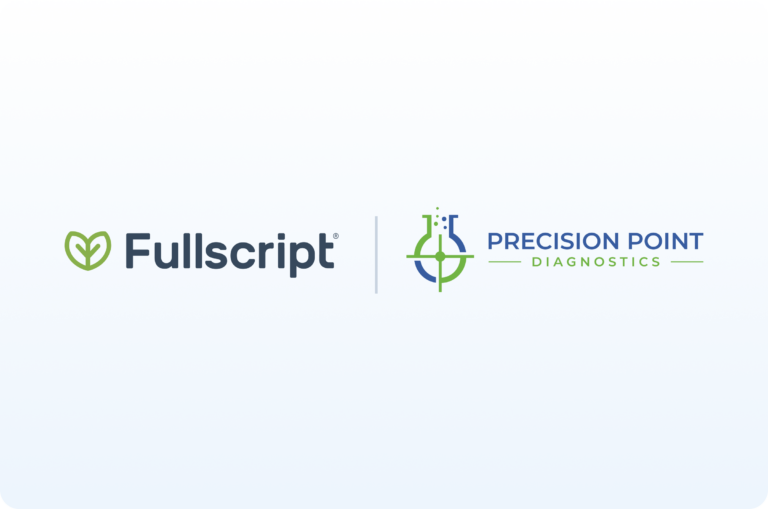Did you know? According to the National Institutes of Mental Health, 2.3% of adults in the U.S. suffer from OCD, and women are more than three times as likely to be diagnosed with OCD than men. (26)
What is OCD?
OCD is a persistent anxiety disorder marked by intrusive and disturbing thoughts (obsessions) and repetitive behaviors (compulsions). (15) These thoughts and behaviors can become so all-consuming that they interfere with daily life. Even though people with OCD may recognize that these thoughts and behaviors aren’t logical and have no basis in reality, they can’t control them or stop them. (26)What causes OCD?
The exact cause of OCD isn’t known but some researchers believe it may stem from a biochemical imbalance in the brain, especially an imbalance in serotonin or glutamate. (15) Other theories include a family history of OCD, childhood trauma or stress, or even structural differences in the brains of those with the condition. (1)(9)(23)(26)
Obsessive cleaning and the fear of germs are two examples of the symptoms that can arise from OCD.
OCD symptoms
Symptoms of OCD can vary from person to person and include obsessions, compulsions, or sometimes both. Obsessions are thoughts or urges that are repetitive and can trigger anxious feelings. Compulsions, on the other hand, are behaviors that you feel need to be done repeatedly as a way to minimize anxiety or to reduce obsessive thoughts. (25)Examples of obsessive thoughts include:
- Aggressive thoughts toward yourself or others
- Experiencing forbidden thoughts about sex or religion
- Fear of germs
- Fear of losing something
- Needing to line objects up precisely or in order
- Worrying about harm coming to yourself or others
- Arranging things in a particular, precise way
- Compulsive counting
- Excessive cleaning
- Extreme, repetitive hand washing
- Hoarding
- Repeatedly checking on things (e.g., whether you’ve locked the door or turned off the oven)
- Silently repeating words or phrases (25)(28)
Diagnosing OCD
Patients with OCD may be reluctant to tell their healthcare practitioner about their obsessions or compulsions because of a perceived stigma or simply because they are embarrassed. (13) Instead, they may report feelings of depression or anxiety, which often coexist with OCD. In fact, about 75% of those with OCD suffer from an anxiety disorder and 40% also live with major depression. (11) Of more concern, one community survey reported that 63% of those with OCD have had suicidal thoughts. (35)If a healthcare practitioner suspects OCD, standardized diagnostic tests such as the Obsessive-Compulsive Inventory-Revised or the Florida Obsessive-Compulsive Inventory can help uncover OCD. (14)(32)
Did you know? Most people with OCD are diagnosed by about age 19, typically earlier in boys than in girls. (25)

Cognitive behavior therapy may help retrain obsessive or compulsive behavior.
OCD treatment
Treatment can help to reduce the severity and frequency of obsessive thoughts and compulsions. Cognitive behavior therapy (CBT), which involves exposure to activities or thoughts that provoke anxiety, can be a very effective form of psychotherapy for those with OCD. Over time, the person learns techniques that foster a healthy response to these activities. (11)(34)Medication, with or without CBT, is also often used to treat OCD. Antidepressants that increase or regulate serotonin levels like selective serotonin reuptake inhibitors (SSRIs) or clomipramine are often used to prevent unwanted thoughts and the urge to perform repetitive actions. Glutamate-modulating drugs like memantine may also help reduce the symptoms of OCD. (15)(18)(20) While both types of medication have shown efficacy, they can cause side effects such as aggression, sleep disturbances, sexual dysfunction, and weight gain. (12)(21)
6 supplements for OCD
Studies suggest that some medicinal herbs and nutrients may improve the symptoms of OCD and also reverse some of the common nutritional deficiencies found in those with the condition. (17) Although research is still in its infancy, clinical trials of the following herbs and nutrients show some promise.Borage (Borago officinalis)
Borage is a medicinal herb native to the Middle East with anti-anxiety and sedative effects comparable to the prescription drug diazepam. (17) One six-week trial involving 44 patients with OCD found that supplementing with 500 mg of a borage extract was more effective than a placebo for reducing anxiety and OCD behaviors. (31)
Milk thistle may be just as effective as some prescription antidepressants for reducing OCD symptoms.
Milk thistle (Silybum marianum)
Milk thistle has a long-standing reputation for protecting the liver. (22) Along with its liver-supportive properties, some studies suggest that this medicinal herb may be effective for those OCD patients who can’t or prefer not to take conventional drugs. In one eight-week double-blind, placebo-controlled study, researchers found that a daily dose of milk thistle was just as effective as fluoxetine (Prozac) for symptomatic relief. (30)N-acetyl cysteine
N-acetyl cysteine (NAC) is a powerful antioxidant and the precursor to glutathione, which is known as the body’s master antioxidant. (36) Research suggests that NAC may also reduce the oxidative stress and inflammation that may play a role in OCD. (24) One randomized clinical trial of 48 patients who didn’t respond to SSRIs found that those taking NAC experienced significant improvement in their symptoms. (29) Other studies show taking NAC with serotonin reuptake inhibitors (SSRIs) resulted in more improvement than the SSRI alone. (2)(6)Disclaimer: The U.S. Food and Drug Administration (FDA) recently adopted a position prohibiting supplement manufacturers from marketing N-acetyl-L-cysteine (NAC) products as dietary supplements. At this time, all NAC products will remain available through the Fullscript catalog. Fullscript will be closely following the Council for Responsible Nutrition (CRN) and the FDA for guidance and will not be removing NAC from the catalog until it is mandated. Fullscript’s quality team is continuing to monitor this situation, and should any changes occur, Fullscript will promptly notify practitioners.
St. John’s wort (Hypericum perforatum)
Well known for its ability to ease the symptoms of depression, St. John’s wort increases serotonin levels in the brain and normalizes the hypothalamus-pituitary-adrenal axis (HPA-axis) by reducing inflammation and oxidative stress. (3)(4) Despite these actions, studies are mixed on this medicinal herb’s effectiveness for OCD. During one small open-label study, 42% of the participants experienced significant improvements in their symptoms while taking St. John’s wort and another 50% reported minimal improvement based on the Yale-Brown Obsessive Compulsive Scale (Y-BOCS). (33) However, other studies show little or no improvement in subjects taking St. John’s wort. (19)Valerian
The root of this perennial plant has traditionally been used to ease insomnia. (5) However, valerian may also be useful for treating some psychological disorders like anxiety and OCD, benefit which have been attributed to two compounds: aleuronic acid and valepotriates. (17) Although few studies have explored the use of valerian root for OCD, one double-blind, randomized pilot study that appeared in the Journal of Complementary and Integrative Medicine found that valerian was more effective than a placebo for treating OCD symptoms. (27)Vitamin D
Commonly known as “the sunshine vitamin,” vitamin D is critical for healthy brain development and function. Studies show that it plays an important role in brain structure and many brain functions like neurotransmission, neuroprotection, and the ability to learn and change. (10)(16) Yet, people with OCD have been found to have low levels of this important nutrient. (7) There’s also some evidence to show that the more severe the deficiency, the more severe the symptoms of OCD. (17) Adding a vitamin D supplement to their daily routine may help reduce OCD symptoms in some people. (8)The bottom line
OCD is a chronic mental health condition that can interfere with work, school, social interactions, and well-being. If you suspect you have OCD, talk to your healthcare practitioner about your symptoms. Although there is some evidence that the medicinal herbs and nutrients discussed above may help reduce obsessions and compulsions, more research is needed.Because OCD can be a serious, potentially life-altering, condition, it’s wise to avoid self-treatment. Instead, work with your healthcare practitioner or a qualified mental health expert to develop a treatment plan individualized to your particular needs and symptoms.
- Abramowitz, J.S., Taylor, S., & McKay, D. (2009). Obsessive-compulsive disorder. The Lancet, 374(9688), 491-499.
- Afshar H, Roohafza H, Mohammad-Beigi H, Haghighi, M., Jahangard, L., Shokouh, P., Sadeghi, M., & Hafezian, H. (2012). N-Acetylcysteine add-on treatment in refractory obsessive-compulsive disorder: a randomized, double-blind, placebo-controlled trial. Journal of Clinical Psychopharmacology. 32:797–803.
- Alramadhan, E., Hanna, M.S., Hanna, M.S., Goldstein, T.A., Avila, S.M., & Weeks, B.S. (2012). Medical Science Monitor, 18(4), RA40-RA48.
- Ara, I. & Bano, S. (2009). St. John’s wort modulates brain regional serotonin metabolism in swim stressed rats. The Pakistan Journal of Pharmaceutical Sciences, 22(1), 94-101.
- Bent, S.,. Padula, A., Moore, D., Ptterson, M., & Mehling, W. (2006). Valerian for sleep: a systematic review and meta-analysis. American Journal of Medicine, 119(12), 1005-1012.
- Bhaskara, S. (2019). N-acetylcysteine augmentation in refractor obsessive-compulsive disorder. Journal of Psychiatry & Neuroscience, 44(3), 215-216.
- Celik, G., Tas, D., Tahiroglu, A., Avci, A., Yuksel, B., & Cam, P. (2016). Vitamin D deficiency in obsessive-compulsive disorder patients with pediatric autoimmune neuropsychiatric disorders associated with streptococcal infections: a case control study. Archives of Neuropsychiatry, 53(1), 33-37.
- Celik, G., Tas, D.A., Varmis, D.A., Tahiroglu, A., & Avici, A. (2016). Vitamin D insufficiency in a boy with obsessive-compulsive disorder., Pediatrics International, 58(7), 646-648.
- Dykshoorn, K.L. (2014). Trauma-related obsessive-compulsive disorder: a review. Healthy Psychology and Behavioral Medicine, 2(1), 517-528.
- Eyles, D.W., Burne T.H.J., & McGrath, J.J. (2013). Vitamin D, effects on brain development, adult brain function and the links between low levels of vitamin d and neuropsychiatric disease. Frontiers in Neuroendocrinology, 34(1), 47-64.
- Fenske, J.N. & Petersen, K. (2015). Obsessive-compulsive disorder: diagnosis and management. American Family Physician, 92(10), 896-903.
- Ferguson, J.M. (2001). SSRI antidepressant medications: adverse effects and tolerability. The Primary Care Companion to the Journal of Clinical Psychiatry, 3(1), 22-27.
- Fineberg, N.A., Krishnaiah, R.B., Moberg, J., & O’Doherty, C. (2008). Clinical screening for obsessive-compulsive and related disorders. The Israel Journal of Psychiatry and Related Sciences, 45(3), 151-163.
- Foa, E.B., Huppert, J.D., Leiberg, S., Langner, R., Kichic, R., Hajcak, G., & Salkovskis, P.M. (2002). The obsessive-compulsive inventory: development and validation of a short version. Psychological Assessment, 14(4), 485-496.
- Goodman, W.K., Grice, D.E., Lapidus, K.A.B., & Coffey, B.J. (2014). Obsessive-compulsive disorder. The Psychiatric Clinics of North America, 37(3), 257-267.
- Holick, M.F. (2014). Vitamin D and brain health: the need for vitamin D supplementation and sensible sun exposure. Journal of Internal Medicine, 277(1), 90-93.
- Karci, C.K. & Celik, G.G. (2020). Nutritional and herbal supplements in the treatment of obsessive compulsive disorder. General Psychiatry, 33(2), e100159.
- Kellner, M. (2010). Drug treatment of obsessive-compulsive disorder. Dialogues in Clinical Neuroscience, 12(2), 187-197.
- Kobak, K.A., Taylor, L.V.H., Bystritsky, A., Kohlenberg, C.J., Greist, J.A., Tucker, P., Warner, G., … Vapnik, T. (2005). St. John’s wort versus placebo in obsessive-compulsive disorder: results from a double-blind study. International Clinical Psychopharmacology, 20(6), 299-304.
- Marinova, Z., Chuang, D., & Fineberg, N. (2017). Glutamate-modulating drugs as a potential therapeutic strategy in obsessive-compulsive disorder. Current Neuropharmacology, 15(7), 977-995.
- Memantine. (2016). Medline Plus. https://medlineplus.gov/druginfo/meds/a604006.html
- Mulrow, C., Lawrence, V., Jacobs, B., Dennehy, C., Sapp, J., Ramirez, G., Aguilar, C., … Flora, K. (2000). Milk Thistle: Effects on Liver Disease and Cirrhosis and Clinical Adverse Effects. Summary, Evidence Report/Technology Assessment: Number 21, September 2000. Agency for Healthcare Research and Quality, Rockville, MD. http://text.nlm.nih.gov/ftrs/directBrowse.pl?collect=epc&dbName=milktsum
- Nestadt, G., Grados, M., ,& Samuels, J.F. (2010). Genetics of OCD. The Psychiatric Clinics of North America, 33(1), 141-158.
- Ng, F., Berk, M., Dean, O., & Bush, A.I. (2008). Oxidative stress in psychiatric disorders: evidence base and therapeutic implications. International Journal of Neuropsychopharmacology, 11, 851–876.
- Obsessive-Compulsive Disorder. (2017). The National Institute of Mental Health. https://pubmed.ncbi.nlm.nih.gov/31760413/
- Obsessive-Compulsive Disorder. (2017). The National Institute of Mental Health. https://www.nimh.nih.gov/health/statistics/obsessive-compulsive-disorder-ocd.shtml
- Pakseresht, S., Boostani, H., & Sayyah, M. (2011). Extract of valerian root (Valeriana officinalis L.) vs. placebo in treatment of obsessive-compulsive disorder: a randomized double-blind study. Journal of Complementary and Integrative Medicine, 8(1).
- Parmet, S., Lynm, C., Golub, R.M. (2011). Obsessive-compulsive disorder. JAMA, 305(18), 1926.
- Sarris, J., Oliver, G., Camfield, D.A., Dean, O.M., Dowling, N., Smith, D.J., Murphy, J., …Ng, C.H. (2015). N-acetyl cysteine (NAC) in the treatment of obsessive-compulsive disorder: a 16-week, double-blind, randomised, placebo-controlled study. CNS Drugs, 29(9), 801-809.
- Sayyah, M., Boostani, H., Pakseresht, S, & Malayeri, A. (2010). Comparison of Silybum marianum (L.) Gaertn. With fluoxetine in the treatment of obsessive-compulsive disorder. Progress in Neuropsychopharmacology and Biological Psychiatry, 34(2), 362-365.
- Sayyah, M., Boostani, H., Pakseresht, S., & Malaieri, A. (2009). Efficacy of aqueous extract of Echium amoenum in treatment of obsessive-compulsive disorder. Progress in Neuropsycoharmacology and Biological Psychiatry, 33(8), 1513-1516.
- Storch, E.A., Kaufman, D.A.S., Bagner, D., Merlo, L.J., Shapira, N.A., Gefken, G.R., Murphy, T.K., and Goodman, W.K. (2007). Florida obsessive-compulsive inventory: development, reliability, and validity. Journal of Clinical Psychology, 63(9), 851-859.
- Taylor, LH. & Kobak, K.A. (2000). An open-label trial of St. John’s wort (Hypericum perforatum) in obsessive-compulsive disorder. Journal of Clinical Psychiatry, 61(8), 575-578.
- Tolin, D.F., Diefenbach, G.J., & Gilliam, C.M. (2011). Stepped care versus standard cognitive-behavioral therapy for obsessive-compulsive disorder: a preliminary study of efficacy and costs. Depression and Anxiety, 28(4), 314-323.
- Torres, AR., Prince, M.J., Bebbington, P.E., Bhugra, D., Brugha, T.S., Farrell, M., Jenkins, R., … Singleton, N. (2006). Obsessive-compulsive disorder: prevalence, comorbidity, impact, and help-seeking in the British National Psychiatric Morbidity Survey of 2000. American Journal of Psychiatry, 163(11), 1978-1985.
- Whillier, S., Raftos, J.E., Chapman, B., & Kuchel, P.W. (2009). Role of N-acetylcysteine and cystine in glutathione synthesis in human erythrocytes. Redox Report, 14(3), 115-124.





